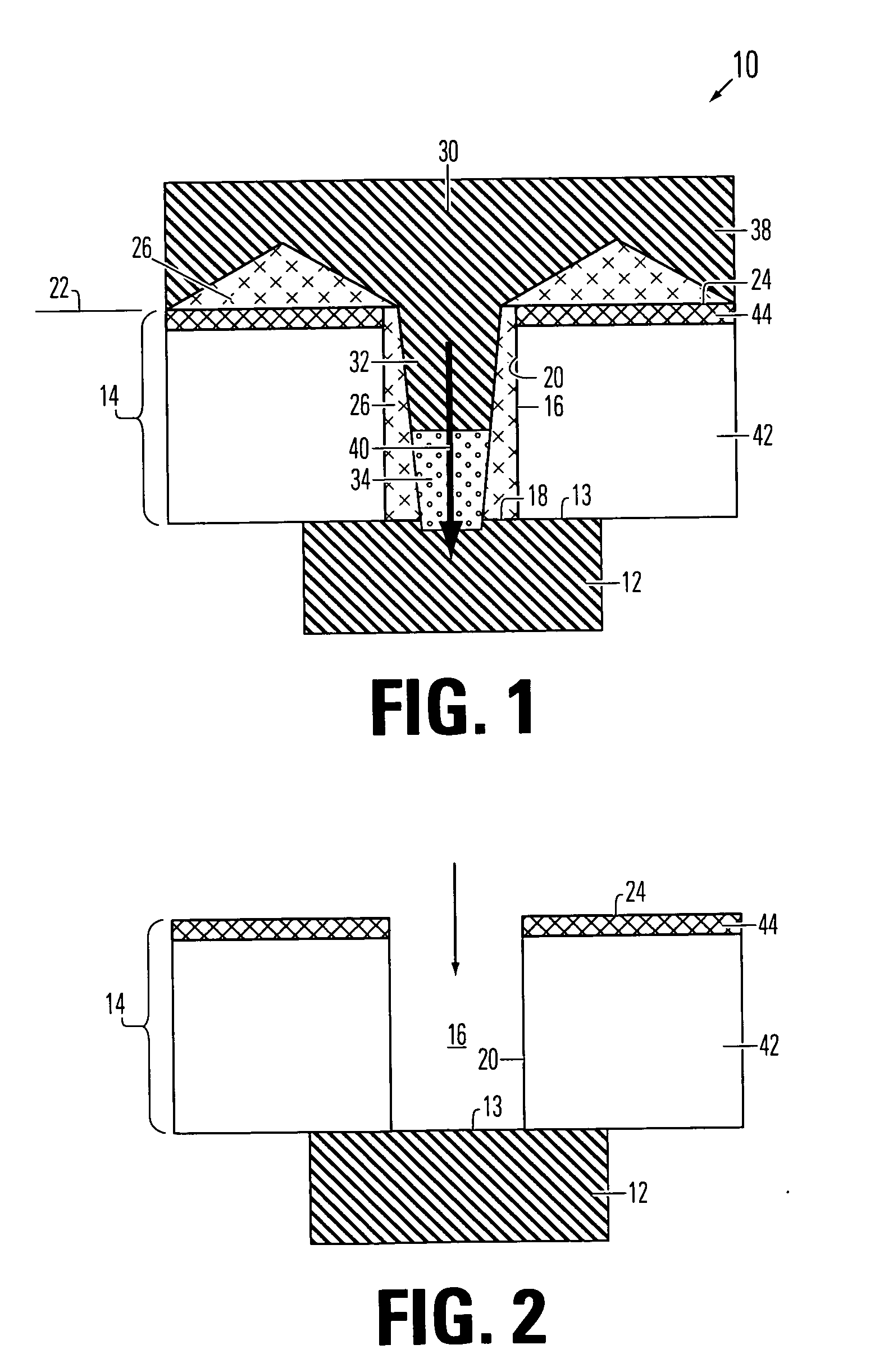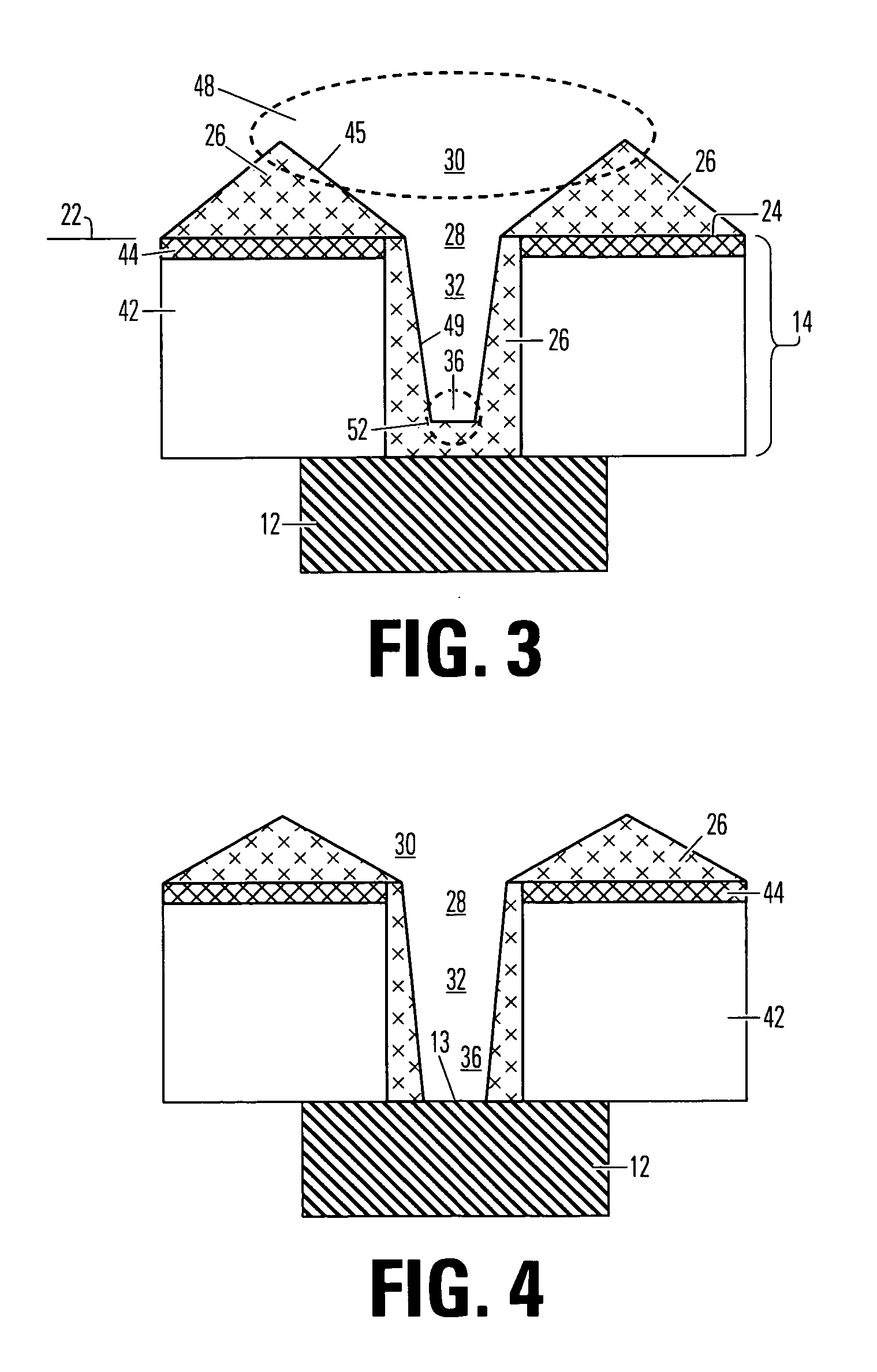Memory cell device and manufacturing method
a memory cell and manufacturing method technology, applied in the direction of semiconductor devices, electrical apparatus, transistors, etc., can solve the problems of very small dimensions of manufacturing such devices, and achieve the effect of facilitating the change of an electrical property sta
- Summary
- Abstract
- Description
- Claims
- Application Information
AI Technical Summary
Benefits of technology
Problems solved by technology
Method used
Image
Examples
Embodiment Construction
[0020] The following description of the invention will typically be with reference to specific structural embodiments and methods. It is to be understood that there is no intention to limit the invention to the specifically disclosed embodiments and methods but that the invention may be practiced using other features, elements, methods and embodiments. Like elements in various embodiments are commonly referred to with like reference numerals.
[0021]FIG. 1 is a simplified cross-sectional view of a memory cell device 10 made according to one embodiment of the invention. Device 10 comprises broadly a first, bottom electrode 12 having an electrode surface 13 onto which a separation layer 14 is deposited. A hole 16 is formed through separation layer 14 down to first electrode 12. Hole 16 is bounded by a bottom 18, a side wall 20 and a plane 22 defined by the upper surface 24 of separation layer 14. A material 26 is deposited on upper surface 24, side wall 20 and bottom 18 preferably usin...
PUM
 Login to View More
Login to View More Abstract
Description
Claims
Application Information
 Login to View More
Login to View More - R&D
- Intellectual Property
- Life Sciences
- Materials
- Tech Scout
- Unparalleled Data Quality
- Higher Quality Content
- 60% Fewer Hallucinations
Browse by: Latest US Patents, China's latest patents, Technical Efficacy Thesaurus, Application Domain, Technology Topic, Popular Technical Reports.
© 2025 PatSnap. All rights reserved.Legal|Privacy policy|Modern Slavery Act Transparency Statement|Sitemap|About US| Contact US: help@patsnap.com



